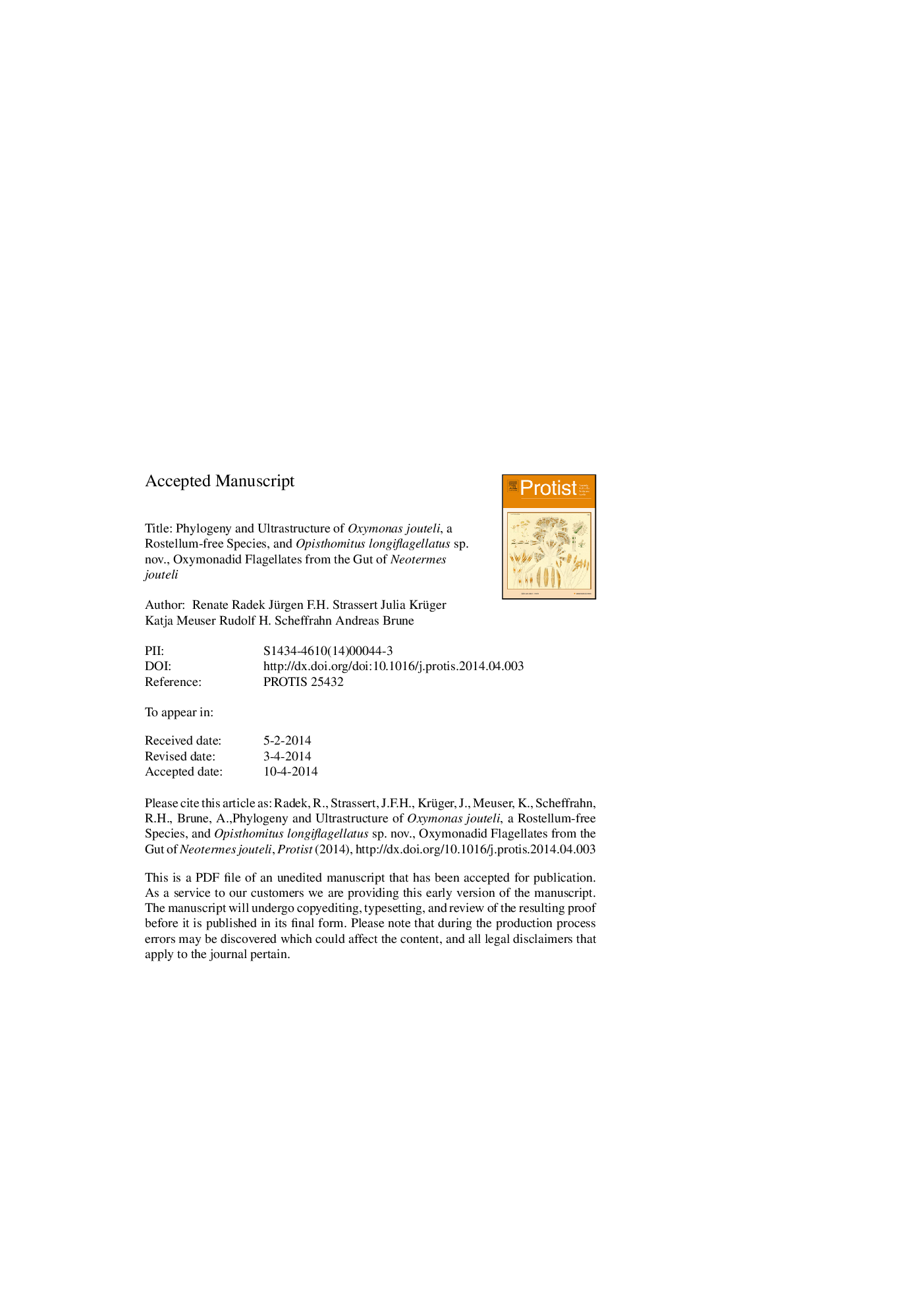| Article ID | Journal | Published Year | Pages | File Type |
|---|---|---|---|---|
| 10879079 | Protist | 2014 | 37 Pages |
Abstract
The biodiversity of oxymonadid flagellates in termite hindguts is not fully explored. Many species have been differentiated only by morphological features, and small-celled species have been overlooked or ignored. Our analysis of the dry wood termite Neotermes jouteli by light and electron microscopy revealed the presence of two distinct morphotypes of oxymonads. The larger one matched the morphology of Oxymonas jouteli, the only oxymonad species described from this termite. Although it generally lacks the typical anterior rostellum of the genus Oxymonas, its SSU rRNA gene sequence clusters among other members of this genus, including novel phylotypes that we obtained from Incisitermes tabogae. The second morphotype was a tiny oxymonad that showed the typical traits of the genus Opisthomitus, including a pointed anterior prolongation (lappet). However, the four equal flagella were much longer than those of Opisthomitus avicularis from Kalotermes flavicollis, the only species of the genus and so far described only by light microscopy. We provide a detailed description of Opisthomitus longiflagellatus sp. nov. and demonstrate that despite ultrastructural similarities to members of the Polymastigidae, its SSU rRNA gene sequences form a separate family-level lineage with a slight affinity to the Pyrsonymphidae.
Keywords
Related Topics
Life Sciences
Agricultural and Biological Sciences
Agricultural and Biological Sciences (General)
Authors
Renate Radek, Jürgen F.H. Strassert, Julia Krüger, Katja Meuser, Rudolf H. Scheffrahn, Andreas Brune,
